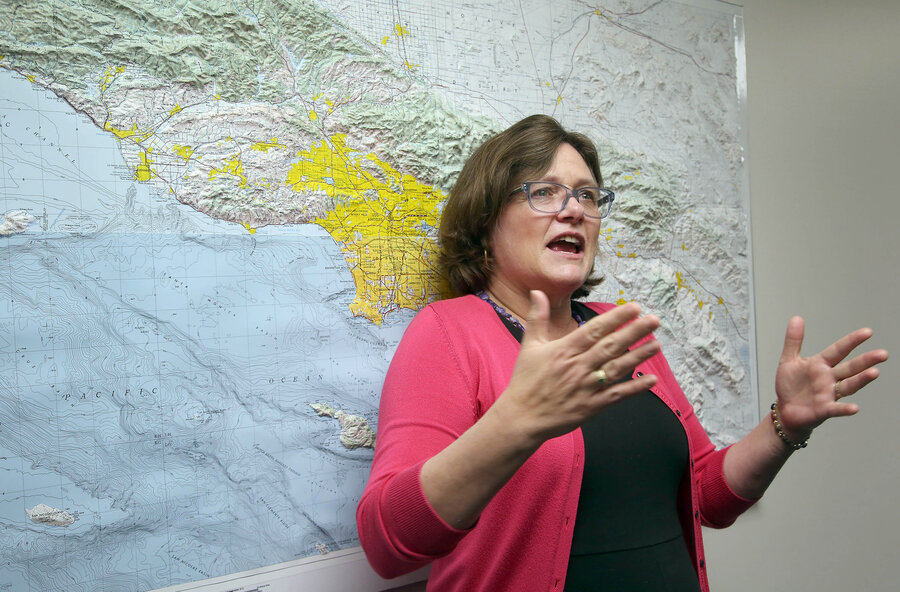Earthquake expert retires. Who is Lucy Jones?
Loading...
In a state where earthquake worries run deep, scientist Lucy Jones has spent the last 33 years of her life quieting the fear.
Working as an earthquake expert at the US Geological Survey for the last 33 years, Dr. Jones, 61, has been dubbed ‘the earthquake lady.’
During her tenure, Jones has become the go-to expert for media outlets on all things earthquakes. In 1992, she famously gave an on-air interview explaining the science behind J. Her methodology for earthquake prediction has been adopted around the world.
“When I give it a name, I give it a number, I give it a fault, it puts it back into a box and makes it less frightening,” Jones told the Los Angeles Times. “You feel better if somebody shows they understand what’s going on.”
Since joining the California Seismic Safety Commission in 2002 Jones has been showing the world “what’s going on,” demonstrating the power of collaboration between policy and science. After realizing how much of California’s infrastructure would be decimated by a big future quake on the San Andreas fault, see wrote a 308-page "ShakeOut" report.
From her studies came the ShakeOut drill, one of Jones’s efforts to teach Californians what to do when an earthquake strikes. Over 43 million people practiced her “drop, cover and hold on” drill last year alone. And in October, after working closing with LA Mayor Eric Garcetti, Jones helped pass the nation’s toughest earthquake safety rules. Signed in October, the legislation requires about 15,000 LA buildings to be retrofitted to better withstand a strong quake.
“In a city defined by celebrity, Jones has a unique kind of fame,” noted Rosanna Xia of the Los Angeles Times. “She’s been called the Beyonce of earthquakes, the Meryl Streep of government service, a woman breaking barriers in a man’s world.”
Besides her colleague, fellow seismologist Kate Hutton, Jones is one of the few prominent female earthquake scientists. Since her college years, when Jones chose Brown University over Harvard (because the idea of having to go to Radcliffe College, once Harvard’s counterpart for female students, really “bugged the hell” out of her) Jones has worked against gender disparities.
“We don’t look anything alike – the only reason we were confused was because we are both women,” Jones tells the LA Times, referring to her colleague Hutton. “The guys doing the same thing don’t get called ‘the earthquake guys.’”
Jones says she always knew she wanted to be a scientist, it just took her a while to decide what kind.
“I was a physics major in college up to my last year,” she tells The New York Times. “Then I discovered that most of the jobs for physics majors involved making bombs – not my interest. I took a geology class in my senior year and fell in love with the subject… By studying earthquakes I thought maybe my work could save some lives.”
But Jones isn’t leaving the field of science. After her last day at USGS on March 30, she will start raising money to build a nonprofit center “to promote a better understanding of science in the broader community and to implement programs to reduce the risks from natural disasters.”
Her center’s first big challenge? Tackling climate change, says Jones.






